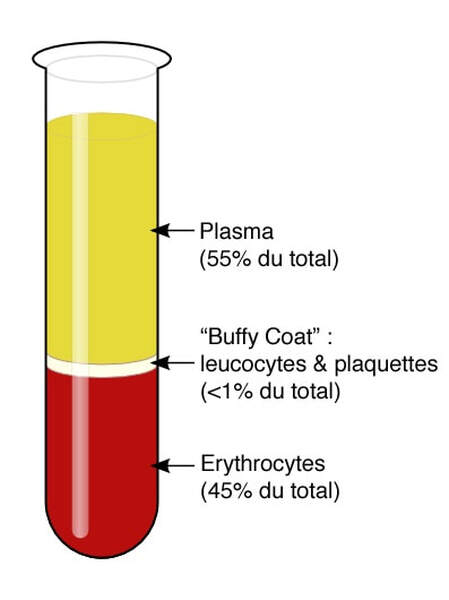Redefining the Factors Behind Exercise's Benefits for the Brain
There are many widely-known beneficial effects of exercise on physical health: strengthening muscle, improving blood circulation, and promoting heart health. However, the cerebral (brain-related) benefits of exercise are often ignored. These benefits include slowing both cognitive aging (the decline in brain processes due to aging) and neurodegeneration (the deterioration of nerve cells known as neurons).
Scientists have previously hypothesized that the cerebral benefits of exercise are possibly due to exercise’s ability to reduce inflammation in the brain or spinal cord, called neuroinflammation, and increase neuroplasticity (the brain’s ability to change and adapt). The reduction in neuroinflammation is meaningful because with age, chronic inflammation levels in the brain progressively increase, and high levels of this chronic inflammation contribute to cognitive impairment and are associated with neurodegenerative diseases such as Alzheimer’s disease. By reducing the inflammation that tends to increase with age, exercise slows cognitive aging and thus helps prevent age-related cognitive impairment and neurodegenerative diseases.
However, the biological mechanisms through which exercise produces these effects is less well understood. In order to explore these mechanisms, researchers from the Stanford University School of Medicine recently conducted a study. They used a mouse model in one portion of their study, in which they first collected a sample of plasma (a component of blood) from mice that were voluntarily exercising, meaning that they were provided a wheel and instinctually began to run on it. The researchers denoted this plasma as "runner's plasma" (RP). Then, they injected the RP collected from the exercising mice into sedentary mice and found that after injection, the sedentary mice had reduced levels of neuroinflammation. After further analysis, the researchers also found that reduced inflammation was linked to the presence of a particular protein, known as clusterin, which binds to brain cells and leads to reduced inflammation.
Scientists have previously hypothesized that the cerebral benefits of exercise are possibly due to exercise’s ability to reduce inflammation in the brain or spinal cord, called neuroinflammation, and increase neuroplasticity (the brain’s ability to change and adapt). The reduction in neuroinflammation is meaningful because with age, chronic inflammation levels in the brain progressively increase, and high levels of this chronic inflammation contribute to cognitive impairment and are associated with neurodegenerative diseases such as Alzheimer’s disease. By reducing the inflammation that tends to increase with age, exercise slows cognitive aging and thus helps prevent age-related cognitive impairment and neurodegenerative diseases.
However, the biological mechanisms through which exercise produces these effects is less well understood. In order to explore these mechanisms, researchers from the Stanford University School of Medicine recently conducted a study. They used a mouse model in one portion of their study, in which they first collected a sample of plasma (a component of blood) from mice that were voluntarily exercising, meaning that they were provided a wheel and instinctually began to run on it. The researchers denoted this plasma as "runner's plasma" (RP). Then, they injected the RP collected from the exercising mice into sedentary mice and found that after injection, the sedentary mice had reduced levels of neuroinflammation. After further analysis, the researchers also found that reduced inflammation was linked to the presence of a particular protein, known as clusterin, which binds to brain cells and leads to reduced inflammation.
Image Source: "Blood Plasma" by Buffy coat is licensed under CC BY-SA 3.0
After this discovery, in order to determine if their findings were applicable to humans, the researchers studied twenty veterans with amnestic mild cognitive impairment (an early stage of memory loss). The veteran population is particularly susceptible to cognitive impairment due to risk factors such as age, demographics, and increased rates of cognition-affecting conditions such as post-traumatic stress disorder and traumatic brain injury.
First, the researchers took samples of plasma from the veterans and used a protein-analyzing device to measure clusterin levels. Then, the veterans participated in an exercise program, with sessions three times per week over a six-month period. Each session included a warm-up, aerobic exercises such as treadmill walking, and full-body resistance exercises. After the program, the researchers again measured the participants’ clusterin levels. Consistent with the mice models, they found a significant increase in clusterin levels in the veterans after the exercise program from their baseline measurement before starting the program.
One limitation of this study is that the human participants were all veterans, who face particular demographic and environmental risk factors that may not apply as strongly to the general public. Additionally, the human sample size was only 20, limiting the study’s ability to draw conclusions. Further studies with larger and more representative sample sizes must be conducted to determine if these findings are generalizable to broader populations.
Regardless, these results indicate that the increased presence of the protein clusterin in a person’s plasma is linked to exercise's benefits for cognition and memory, and that these plasma changes are even able to reduce inflammation of the brain in mice. The results of the study not only provide greater insight into why exercise is beneficial, but may also shed light on possible future health interventions to improve cognitive function.
First, the researchers took samples of plasma from the veterans and used a protein-analyzing device to measure clusterin levels. Then, the veterans participated in an exercise program, with sessions three times per week over a six-month period. Each session included a warm-up, aerobic exercises such as treadmill walking, and full-body resistance exercises. After the program, the researchers again measured the participants’ clusterin levels. Consistent with the mice models, they found a significant increase in clusterin levels in the veterans after the exercise program from their baseline measurement before starting the program.
One limitation of this study is that the human participants were all veterans, who face particular demographic and environmental risk factors that may not apply as strongly to the general public. Additionally, the human sample size was only 20, limiting the study’s ability to draw conclusions. Further studies with larger and more representative sample sizes must be conducted to determine if these findings are generalizable to broader populations.
Regardless, these results indicate that the increased presence of the protein clusterin in a person’s plasma is linked to exercise's benefits for cognition and memory, and that these plasma changes are even able to reduce inflammation of the brain in mice. The results of the study not only provide greater insight into why exercise is beneficial, but may also shed light on possible future health interventions to improve cognitive function.
Featured Image Source: RF._.studio
RELATED ARTICLES
|
Vertical Divider
|
Vertical Divider
|
Vertical Divider
|






